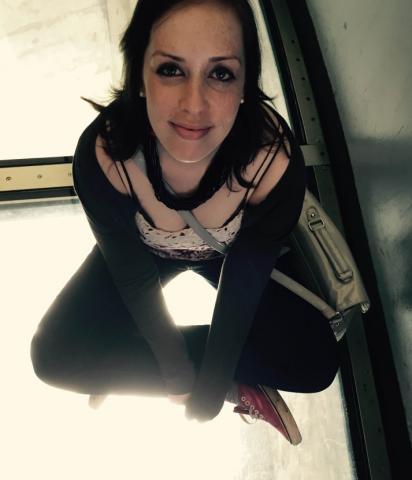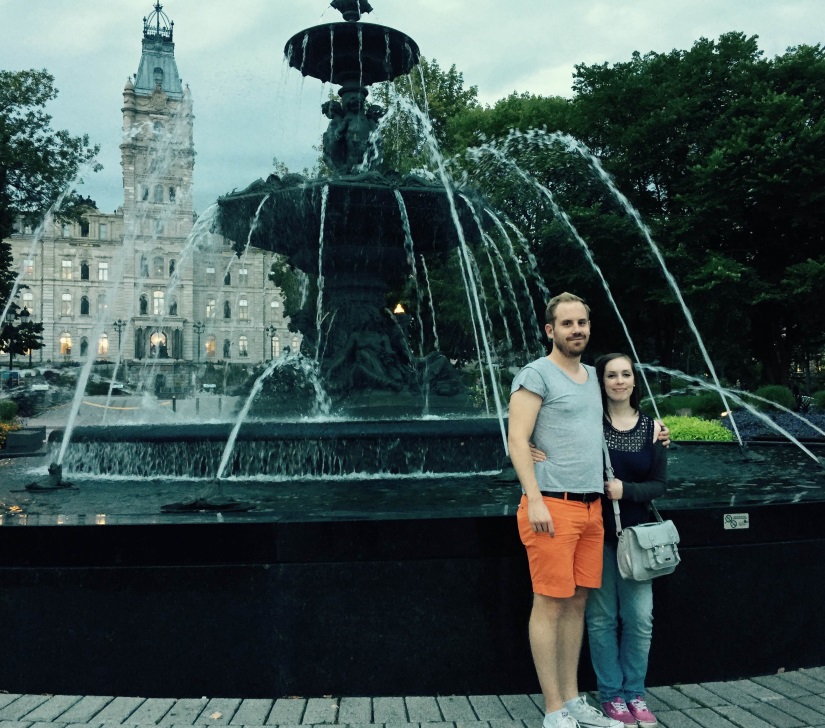Ashling was diagnosed with late-stage acute myeloid leukaemia when she was just 25 years old.
After undergoing treatment and chemotherapy, she went on to have a stem cell transplant in 2012. In this blog, she talks about the part that exercise has played in her recovery and her day-to-day life.
After my transplant…
When I got home from hospital after the transplant, I was very, very weak. I couldn’t get up the stairs without being really out of breath, and I would have to stop halfway to make it more manageable. Feeling like this lasted for over a month; I was pretty unfit and often exhausted.
As part of my recovery I was receiving some physiotherapy, and those daily exercises helped get some movement back into my routine. Gradually I progressed to some relaxed walking – just around my little village, once my strength started to come back.
Support from others
Having people to support you with exercise makes all the difference. My mum has always done Tai Chi, and she suggested I go to a class run by a teacher she liked.
I found that it helped me loads; the gentle movements were actually achievable, and the deep breathing helped with relaxation. It was lovely to have my mum’s support in the beginning, but eventually she left me to it. She’s very advanced and I’m a complete basic, so we went to separate classes.
One thing that was quite challenging in the class was balancing – my balance is appalling! You sometimes have to stand on one leg in Tai Chi, and I’d be hopping about all over the place trying to stay upright.
It wasn’t easy but I did improve with time, and I could see the improvements coming along, which was rewarding.
My boyfriend is an exercise maniac. He does marathons and triathlons all the time, which I’m starting to think might just be a socially-acceptable form of self harm! So Stephen was brilliant at motivating me.
I told him that I’d never been able to run, even at school. Before my transplant I was reasonably fit – I could go on the cross trainer at the gym for 40 minutes, then jump onto a bike – but running is just something I have never been any good at. I get so out of breath when running, and look and feel like I’m dying!
But he just told me to take baby steps with it, and he mentioned the Couch to 5K challenge. There’s a free app you can download on your phone to help you, so I decided to give it a go.
It starts with intervals where you will run for 30 seconds, then walk in between, then run for another 30 seconds – and it builds you up slowly. This might sound dumb, but even after the first 30 seconds of running I was like ‘Oh God, this is too much!’ But I stuck with it.
Personal Goals
It took me about 8 months to get to 5k, which is loads longer than most people would do it in, but I did it, and there were times where I honestly didn’t think I’d get there.
It might not sound like a lot, but it really was a huge milestone for me. I was so proud of myself. (Proud/embarrassed!) I know there are people out there who run 28 miles and are absolutely fine – and I run 5k and it’s hard.
It’s still hard. But it’s my achievement. The next milestone I hope to achieve is running 10k. I don’t want to push myself too much, though, so I will probably stop there and work on getting better at that distance.
Benefits of exercise
Running is really good for bone health, and that is something important to me. Osteoarthritis runs in my family and I had a lot of steroids during my treatment, which can affect your bone health. My boyfriend read an article suggesting that running can be preventative and restorative for weaker bones.
At a recent check-up, my doctor told me my bone health is actually good for someone of my age. I was so happy! It’s absolutely worth the pain I feel a couple of days after running, to do something that makes a direct difference to my health.
Before getting sick, in all honesty, I just couldn’t be bothered with such things, I didn’t see the point – but now I’m well again, I want to look after myself and my body as best I can. If it helps, I’ll do it.
If any patients post-transplant are reading this and thinking about introducing exercise into their lives, I’d simply say to you, ‘Believe in yourself.’
I have achieved things I never thought I could, from very humble beginnings to milestones I am proud of. It’s important to not be too hard on yourself, but reach for the stars – I feel a bit cringey saying that, but really, it’s true!
Physical wellbeing and mental wellbeing go hand in hand. Being physically active is great for alleviating stress. My job stresses me out sometimes, and having a transplant and recovering from one is stressful, too.
When I go for check-ups at the hospital and I’m on the haematology ward, sometimes I will get horrible memories coming back to me and it can be difficult to cope.
But you just have to accept it, and exercising in some way every day really helps me to level myself and bring myself back down. It helps me to say to myself, ‘You’re really lucky, you’re still here.’
I want to keep my body and mind healthy and this is helping me do it.
I’d advise anyone recovering from a transplant to try and do something physical each day; it really does help with the emotional side of things, which is huge.
Do whatever works for you. We all beat ourselves up at times, for perhaps not doing enough, but even some walking can make all the difference – and it could be the start of bigger things.
If you or one of your family members needs or has needed a stem cell or bone marrow transplant, you can join our Transplant Community and our Patients and Families Facebook Page to connect with other patients and their families and share experiences and support.
To find out how you can support Anthony Nolan, visit our website at www.anthonynolan.org/8-ways


